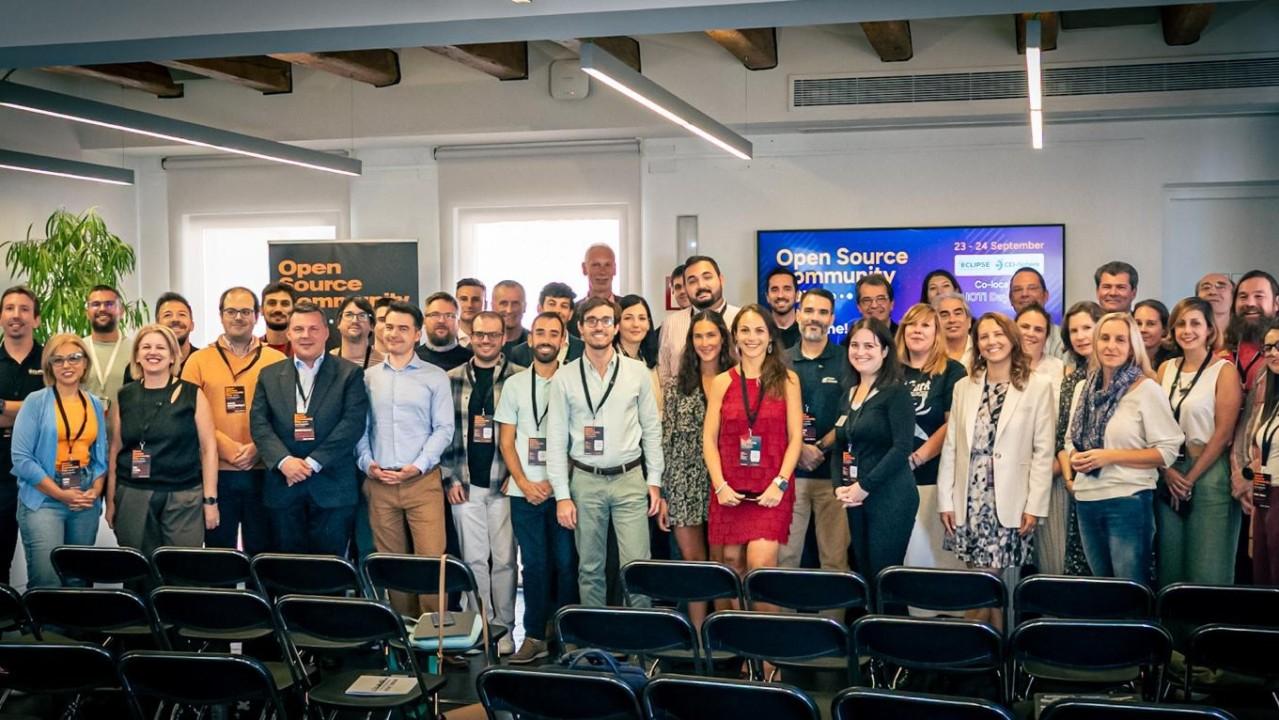
The Open Source Community Day, a dedicated event co-organised by the Eclipse Foundation and the CEI-Sphere project, brought together industrial leaders, open source communities, and EU-funded research initiatives to foster dialogue and collaboration in open source across various domains, from digital infrastructure to vertical applications.
The context
Europe is stepping up efforts to strengthen its Cloud-Edge-IoT (CEI) ecosystem at a time when global competition is dominated by a limited number of hyperscale providers. EU strategies such as the European Data Strategy, the 2030 Digital Compass, and the Competitiveness Compass set a clear ambition: build a federated, open, and competitive digital infrastructure that reduces dependency, safeguards sovereignty, and creates opportunities for SMEs, innovators, and public authorities. Discussions are also shaping around a potential Eurostack — a federated European cloud-edge infrastructure designed to reduce reliance on hyperscalers and foster digital autonomy.
Within this dynamic policy context, the CEI-Sphere project has developed the Hourglass Model, a conceptual framework that illustrates how different layers of digital capabilities and stakeholder groups interact to create intelligent, interoperable, and scalable ecosystems.

The Hourglass Model
Named for its shape — wide at the top and bottom, narrow at the centre — the Hourglass Model shows how data flows from the physical world (IoT sensors, devices, and networks) through enabling platforms and infrastructures, and ultimately up to applications and user interfaces. Each of its layers pairs capabilities (i.e., technological functions such as cloud-edge infrastructure, orchestration, AI, and user interfaces) with stakeholders — those responsible for building, enabling, or governing that layer (such as solution engineers, platform providers, orchestrators, SDOs, policymakers).
This structure ensures modularity (allowing each layer to evolve independently), interoperability (enabling actors to connect across open standards), and scalability (supporting growth from pilots to Europe-wide deployment).

Adoption of the Hourglass Model by the R&I community
The Hourglass Model has been showcased this week at two flagship events: the AIOTI Days (22–23 September) and the Open Source Community Day (23–24 September) in Madrid.
During a series of workshops and open discussions, various projects presented how the Hourglass Model can support pilots and activities in key areas like smart cities, Data Spaces, Digital Twins, semantic interoperability, AI, and cybersecurity.
O-CEI: “The O-CEI project has embraced the Hourglass model as a key tool for building its Cloud-Edge-IoT (CEI) ecosystem. This model will help align project developments and promote the reuse of its components across different markets. O-CEI will also leverage the CEI Tech Backbone toolkit, developed by CEI-Sphere, to define our standardization plans and contribute to the development of a potential ‘trust label’ to ensure the global compliance of future CEI systems,” said Dr Ignacio Lacalle Úbeda (Polytechnical University of Valencia, project coordinator). “O-CEI will focus in particular on Open Source for blueprint deployment,” added Dr Cécile Rabrait and Antonio Kung (Trialog, standardisation leader).

HEDGE-IoT: “The HEDGE-IoT project will deploy IoT assets at different levels of the energy system (from behind-the-meter up to the TSO level), add intelligence to the edge and cloud layers, and bridge the cloud/edge continuum. HEDGE-IoT has used the Hourglass model to analyse gaps in the semantic interoperability ecosystem in terms of governance and interoperability profile,” said Leo Cornec (Trialog).

LICORICE: “The LICORICE project uses the Hourglass model to assess interoperability. It frames the project journey by leveraging the synergy between capabilities, stakeholders, and the mechanisms that make up the narrow part of the Hourglass. It supports the description of the LICORICE Minimum Interoperability Mechanisms, where SSI capabilities, PETs for federated processing, and standards (ISO/IEC SC27, OpenID, etc.) converge,” said project coordinator Trialog’s Diana E. Jimenez Bejarano.

SPADE: “The SPADE project focuses on digital twins for agriculture, utilizing drones. A library dedicated to agriculture, based on BASYX (an open-source solution developed by Gradient with support from the Eclipse Foundation), has been highlighted. SPADE’s contributions to standardization across ITU, IEEE, W3C, ETSI, and ISO/IEC were presented by Dr Amélie Gyrard (Trialog) and Asbjorn Hovsto (Hafenstrom), with additional comments by Antonio Kung.”

CONNECT: “The CONNECT project’s vision is to unlock the use of Vehicle-to-Everything (V2X) messages for day-to-day applications by enabling vehicles to quantify the trustworthiness of exchanged data. The Hourglass model has been applied to the V2X domain, showing that standardization (ETSI, ISO) is essential to build a Trust Assessment Framework (TAF). This framework has been validated and evaluated through three CCAM demos,” said Estibaliz Arzoz Fernandez.

Conclusions
The Hourglass Model offers a common language to design and operate complex CEI systems. The discussions at these events are only the beginning — the model will continue to evolve as more projects apply it, and will serve as a reference point for dialogue across projects and communities.